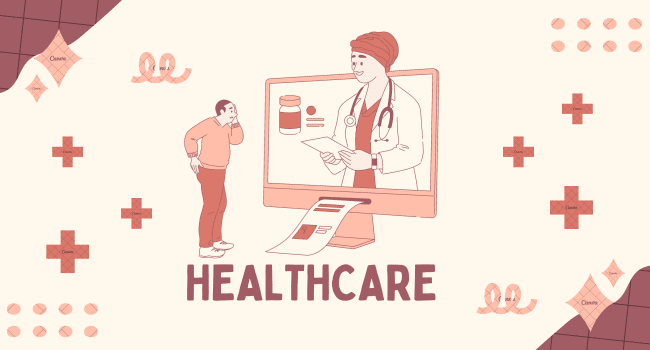Table of Contents
Diagnostic technologies have been at the forefront of innovation in the rapidly evolving healthcare landscape. Medical diagnostic methods are pivotal in detecting, monitoring, and managing various health conditions. As technology advances, the accuracy, speed, and accessibility of medical diagnostics are undergoing transformative changes. Whether you’re searching for a medical diagnostic center near me or are interested in the future of healthcare, this article explores the trends shaping the future of medical diagnostics and their profound impact on patient care.
The Evolution of Medical Diagnostics
Medical diagnostics have come a long way, from simple physical examinations to advanced imaging techniques and molecular analyses. Today, the integration of cutting-edge technology is redefining the possibilities of diagnosis, providing healthcare professionals with unprecedented insights into patients’ conditions. Let’s delve into the key trends that are driving the evolution of medical diagnostics:
- Precision Medicine and Personalized Diagnostics
Precision medicine is a paradigm shift that tailors’ medical decisions, treatments, and interventions to the individual characteristics of each patient. Genetic testing, biomarker analysis, and molecular profiling allow healthcare providers to customize diagnostic and treatment approaches based on a patient’s unique genetic makeup. This approach enhances treatment effectiveness and reduces the risk of adverse effects.
- AI and Machine Learning in Diagnostics
Artificial intelligence (AI) and machine learning are revolutionizing medical diagnostics by analyzing vast amounts of data and identifying patterns that might escape human observation. AI algorithms can assist in interpreting medical images, identifying subtle anomalies, and predicting disease risks. These technologies streamline diagnosis, reduce human error, and expedite decision-making.
- Telemedicine and Remote Diagnostics
Telemedicine bridges geographical gaps and provides access to medical expertise regardless of location. Remote diagnostics enable patients to undergo tests and consultations from the comfort of their homes. Mobile health apps and wearable devices are becoming essential tools for tracking vital signs, monitoring chronic conditions, and providing real-time health data to healthcare professionals.
- Point-of-Care Diagnostics
Point-of-care (POC) diagnostics bring testing directly to the patient, eliminating the need for samples to be sent to a central lab. POC devices deliver rapid results for infectious diseases, diabetes, and cardiac biomarkers. These devices are especially valuable in resource-limited settings and emergencies.
- Liquid Biopsies
Liquid biopsies are non-invasive diagnostic tests that analyze biomarkers in body fluids like blood, urine, or saliva. These tests can detect cancer mutations, genetic abnormalities, and disease progression, offering an alternative to traditional tissue biopsies. Liquid biopsies have the potential to revolutionize cancer diagnosis and treatment monitoring.
- Nanotechnology and Nano Diagnostics
Nanotechnology involves manipulating materials at the nanoscale, enabling the development of miniature diagnostic devices and sensors. Nano diagnostics can detect disease markers with exceptional sensitivity, enabling early detection and monitoring. These technologies have applications in detecting infections, cancer, and neurological disorders.
- Augmented Reality and Virtual Reality
Augmented reality (AR) and virtual reality (VR) are finding applications in medical education and surgical planning. In diagnostics, AR and VR can enhance medical imaging by overlaying diagnostic information onto a patient’s anatomy. This aids in accurate diagnosis, visualization of complex conditions, and planning interventions.
- Non-Invasive Imaging Techniques
Advancements in imaging technologies are making diagnostic procedures less invasive and more precise. Techniques such as MRI, CT scans, and ultrasound continuously improve, providing clearer images and reducing the need for exploratory surgeries.
- Big Data Analytics for Diagnostics
The accumulation of medical data has led to the emergence of big data analytics for diagnostics. Integrating electronic health records, genomic information, and clinical data enables healthcare providers to identify trends, correlations, and predictive models that enhance diagnostic accuracy.
- Rapid Diagnostics for Infectious Diseases
Rapid diagnostic tests are vital tools for identifying infectious diseases quickly and accurately. Technologies such as polymerase chain reaction (PCR) and loop-mediated isothermal amplification (LAMP) enable the detection of pathogens within hours, facilitating timely treatment and containment of outbreaks.
The Future of Healthcare Diagnostics
The convergence of these trends’ points toward a future where medical diagnostics are more precise, accessible, and patient-centric than ever before. Incorporating AI, telemedicine, nanotechnology, and advanced imaging techniques is reshaping how diseases are detected and managed. As you search for a medical diagnostic center near me, consider the transformative potential these trends hold for your health journey.
In conclusion, the future of medical diagnostics is a fusion of innovation, data-driven insights, and personalized care. The advancements discussed here enhance diagnostic accuracy and empower patients to take control of their health. Whether it’s precision medicine, AI-powered diagnostics, or telemedicine, these trends collectively drive a paradigm shift toward early detection, targeted treatments, and improved patient outcomes. As technology progresses, the future of healthcare diagnostics promises a healthier, more connected, and informed world.
Read more on KulFiy
